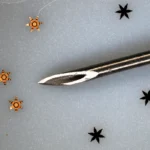Certifying Sustainable Practices

Three at Hopkins have started a new initiative to bring environmental practices to laboratories throughout the university
When graduate research assistant Ryan Weeks brought the My Green Lab sustainability certification program to the Croft Hall laboratory of Johns Hopkins Professor Marc Ostermeier, he was shocked by how much energy could be saved with only minor adjustments to lab procedures.
Per the My Green Lab recommendations, the Homewood campus laboratory began turning off and unplugging equipment at night, ordering from local suppliers, and putting in work orders to fix bothersome leaks in their vaults. Raising the specimen freezer’s temperatures by just 10 degrees, to the still-safe -70 degrees Celsius, led to a 30% energy reduction, with each freezer saving a household’s worth of energy every day.
Now Weeks, along with teaching lab coordinator Christine Duke and energy engineer Bena Zeng, want to bring the environmental certification process—and the sustainable changes it recommends—to the university as a whole.
Recognized by the Association for the Advancement of Sustainability in Higher Education, the American Energy Society, and the International Institute for Sustainable Laboratories, the My Green Lab certification program has become the global benchmark for measuring the environmental impact of laboratory practices, Weeks says.
“This is the new standard across the industry,” says Weeks, who is a member of the Johns Hopkins Sustainability Leadership Council. “And there are government labs and academic labs that are falling behind because they’re stuck in the mindset that they need to keep doing things the way they’ve always been done. We want to be in the forefront of this change and become leaders in sustainability.”
The My Green Lab certification process begins with a self-assessment survey, where all members of a laboratory—principal investigators, assistants, and students—are asked a series of questions about the lab’s practices in 14 major areas. Topics include infrastructure energy, plug load, fieldwork, waste reduction, travel, and resource management. These answers are collected and analyzed, and My Green Lab provides an individually tailored recommendation list to improve each lab’s sustainable practices.
Six months after the lab implements the agreed-upon changes, a second survey is administered and the lab is certified at either the Bronze, Silver, Gold, Platinum, or Green level. Each level represents how closely the lab adheres to the My Green Lab’s standards.
According to Duke, the idea to apply for My Green Lab certification developed as they renewed the Green Office Certification for the Johns Hopkins Institute for NanoBioTechnology, which is housed in Croft Hall. While working on the recertification process, Duke began to wonder if there was a similar program that analyzed individual labs as well as office buildings.
Zeng, who works in the Johns Hopkins Office of Sustainability, brought the My Green Lab program to Duke’s attention. It was exactly what she had pictured, and she pitched the idea to the Institute for NanoBioTechnology to see if any of their labs would be interested in giving the program a try. In the end, Weeks signed on with the Ostermeier lab, while Duke spearheaded the program in the lab of the institute’s director, Sharon Gerecht.
The labs went through their initial survey in February, and while both received adequate marks, there was still much to be done. Duke says they took My Green Lab’s recommendation lists and presentations to each of the lab members, to discuss new expectations and processes to follow.
“You need to get the buy-in from everybody, but especially from the students since they are the ones who are in there every day doing the work,” Duke says. “This whole process really gave us a lot more awareness of how our lab runs, and the places where it could be improved.”
After the six-month assessment period, the Gerecht lab received Gold certification and the Ostermeier lab was certified in the Green standard, the highest My Green Lab designation.
With the success of the Ostermeier and Gerecht labs’ certifications, Duke, Weeks, and Zeng have launched a pilot program for the university to help 25 Hopkins labs through the certification process. Weeks says it’s their hope that this first cohort will show fellow labs and the Hopkins administration that certification is not only good for the environment but is also a financially responsible decision.
“If we save energy across all the labs, that’s going to translate into money savings,” Weeks says. “That translates into labs having more money to do the research that they need to do. This is sustainable not only from an environmental perspective but also from a self-sustaining perspective.”
In January, My Green Lab announced a partnership with AstraZeneca to implement a certification program across each of their research sites. Duke says this reflects the growing importance of sustainable lab practices not only on a lab’s environmental impact but on their ability to compete in the marketplace, as well.
“It’s going to be like a snowball, and it’s going to pick up steam,” Duke says. “I think the competitive nature of some of these labs is going to encourage people to start implementing even more to make sure they’re not left behind. I think it behooves us to realize that this isn’t just an exercise in doing the right thing, this is also the new expectation in industry.”
Story by Jacob DeNobel and posted on the Hub.
Latest Posts
-
 Johns Hopkins Postdoc Named in Forbes `30 Under 30′ List
December 8, 2025
Johns Hopkins Postdoc Named in Forbes `30 Under 30′ List
December 8, 2025
-
 Micro Grippers: David Gracias Builds Micromachines That Fold, Stick, Swim, and Sense—All Inside the Human Body.
November 20, 2025
Micro Grippers: David Gracias Builds Micromachines That Fold, Stick, Swim, and Sense—All Inside the Human Body.
November 20, 2025
-
 A bold new approach to autoimmune diseases
November 19, 2025
A bold new approach to autoimmune diseases
November 19, 2025


